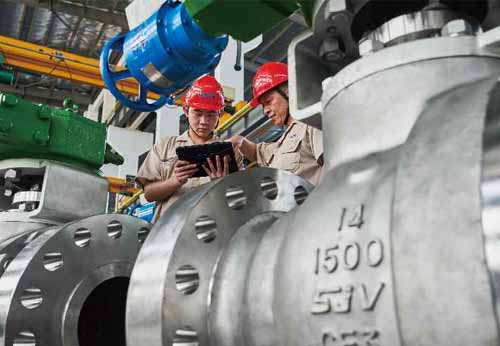In corrosive media applications, corrosion resistance is the most critical factor for chemical equipment. Incorrect selection of valve materials can lead to equipment damage in mild cases or catastrophic accidents in severe scenarios. According to relevant statistics, approximately 60% of chemical equipment failures are caused by corrosion. Therefore, material selection must be approached scientifically during equipment design. A common misconception is that stainless steel is a "universal material" suitable for all media and environmental conditions. This notion is incorrect and dangerous. Below are key considerations for material selection in common chemical media:

-
Valves for Sulfuric Acid Media
Sulfuric acid, a highly corrosive and widely used industrial chemical, exhibits varying corrosion effects depending on concentration and temperature. Carbon steel and cast iron valves perform well in sulfuric acid with concentrations above 80% and temperatures below 80°C. However, they are unsuitable for high-flow sulfuric acid or pump valves. Common stainless steel valves (e.g., 304 (0Cr18Ni9), 316 (0Cr18Ni12Mo2Ti)) have limited applicability for sulfuric acid. High-silicon cast iron valves (difficult to cast and machine) or high-alloy stainless steel valves (e.g., 20号合金) are typically used. Fluoroplastics, such as F46-lined valves, offer cost-effective sulfuric acid resistance. For high-pressure or high-temperature conditions, ceramic ball valves—though significantly more expensive—are preferred due to their superior performance under extreme conditions. -
Valves for Hydrochloric Acid Media
Most metals, including stainless steels, are highly susceptible to hydrochloric acid corrosion. High-silicon iron with molybdenum can only withstand hydrochloric acid below 30% concentration at 50°C. Non-metallic materials, such as rubber-lined or plastic valves (e.g., polypropylene, fluoroplastics), are ideal for hydrochloric acid. However, at temperatures exceeding 150°C or pressures above 16 kg/cm², plastics (including PTFE) fail. Emerging solutions like ceramic ball valves (e.g., Wotuo valves) provide advantages such as self-lubrication, low torque, and longevity, albeit at a higher cost. -
Valves for Nitric Acid Media
Most metals corrode rapidly in nitric acid. Stainless steel valves are widely used for nitric acid resistance, performing well across all concentrations at ambient temperatures. Notably, molybdenum-containing stainless steels (e.g., 316, 316L) may underperform compared to standard grades (e.g., 304, 321). Titanium or titanium alloys are recommended for high-temperature nitric acid applications. -
Valves for Acetic Acid Media
Acetic acid, one of the most corrosive organic acids, severely attacks ordinary steel. Stainless steel valves excel in acetic acid service, with molybdenum-enhanced grades (e.g., 316) suitable for high-temperature or dilute acetic acid vapor. For extreme conditions (e.g., high temperature/concentration or mixed corrosive media), high-alloy stainless steel or fluoroplastic valves are recommended. -
Valves for Alkaline Media (Sodium Hydroxide)
Carbon steel is widely used for sodium hydroxide solutions below 80°C and 30% concentration, and even up to 100°C and 75% concentration in some cases, despite increased corrosion. Stainless steel offers no significant advantage over cast iron for alkalis unless iron contamination is prohibited. Titanium alloys or high-alloy stainless steels are preferred for high-temperature alkaline environments. -
Valves for Ammonia (Ammonium Hydroxide)
Most metals and non-metals exhibit minimal corrosion in liquid ammonia or ammonium hydroxide, except copper and its alloys, which should be avoided. -
Valves for Chlorine Gas (Liquid Chlorine)
Most metals, including alloys, show limited resistance to chlorine gas, especially in moist conditions. PTFE-lined valves are commonly used, but prolonged exposure may lead to PTFE aging and torque issues. A solution is to replace standard PTFE-lined valves with ceramic ball cores lined with PTFE, combining ceramic’s self-lubrication and PTFE’s corrosion resistance. -
Valves for Brine (Seawater)
Carbon steel exhibits moderate corrosion in sodium chloride solutions, seawater, or brine, often requiring protective coatings. Stainless steels (e.g., 316) are preferred due to low uniform corrosion rates, though chloride-induced localized corrosion remains a risk. -
Valves for Alcohols, Ketones, Esters, and Ethers
Common media like methanol, ethanol, acetone, methyl acetate, and ethers are generally non-corrosive, allowing the use of standard materials. However, ketones, esters, and ethers may dissolve certain rubbers, necessitating careful selection of sealing materials.
Many other media are not covered here. In summary, material selection must be deliberate and informed by reliable data or proven experience—never arbitrary.
Pre: Application range of wafer butterfly valve
Next: none










